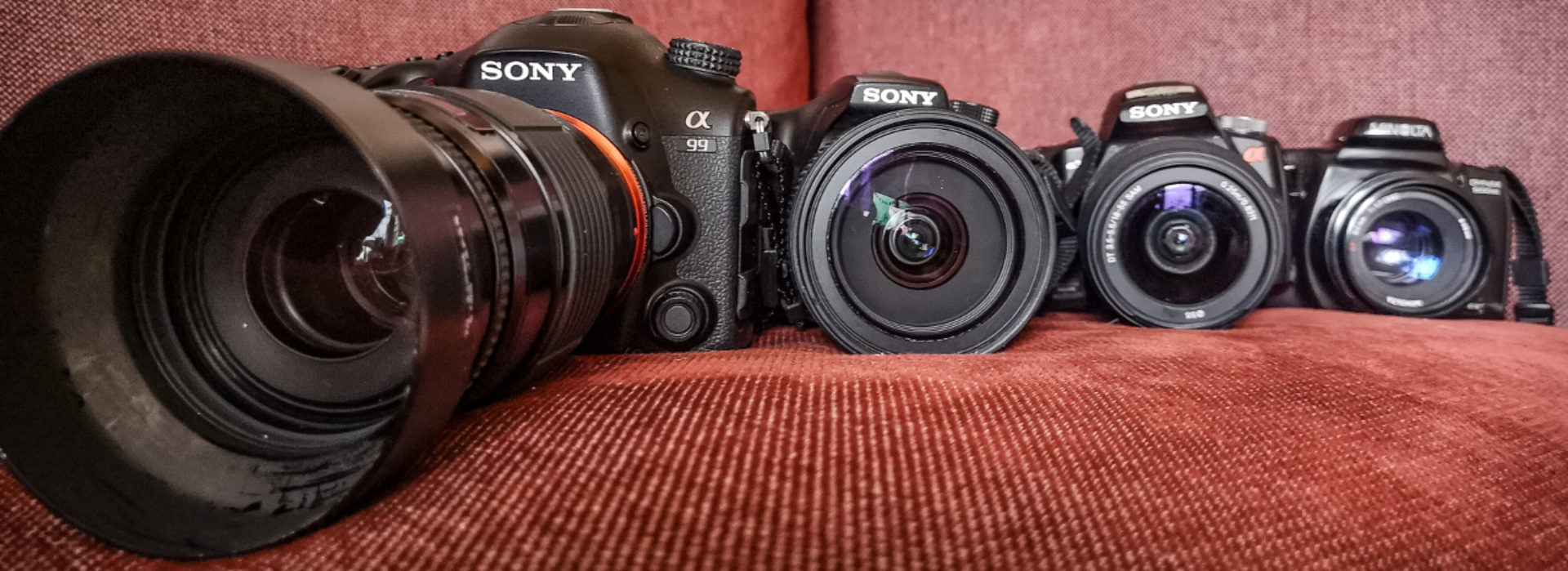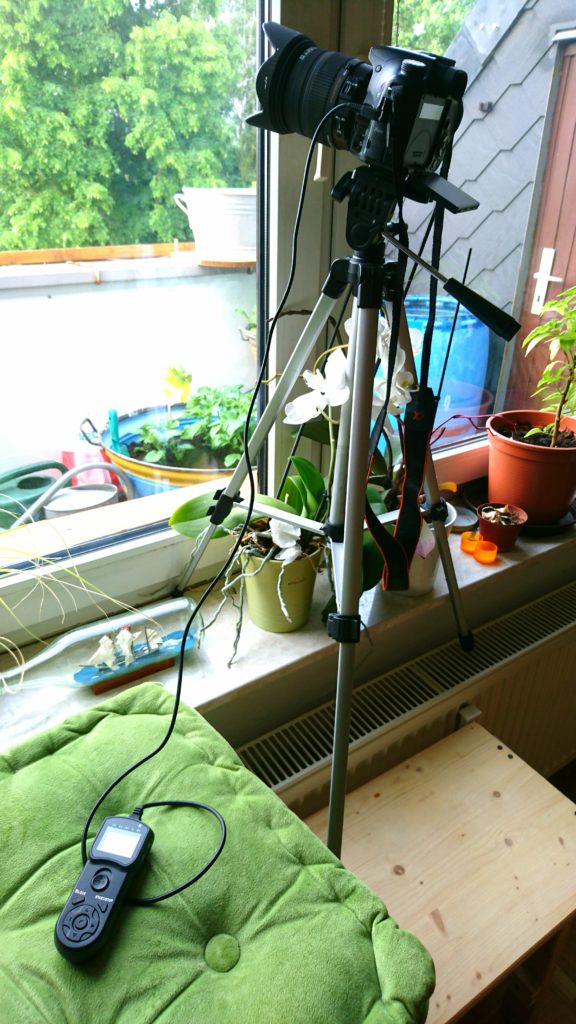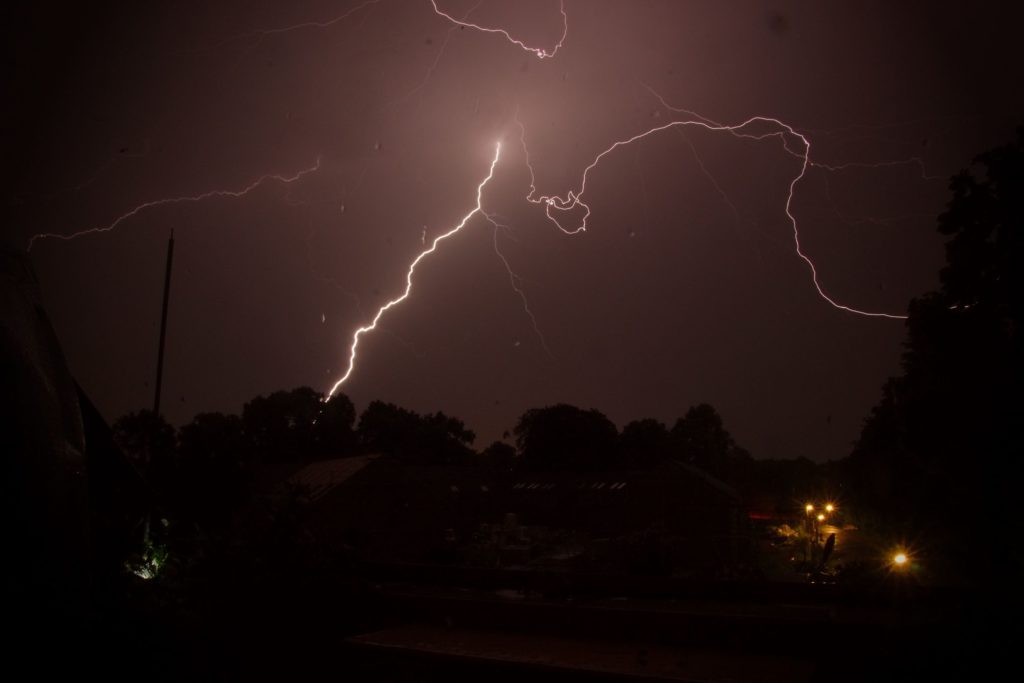Flashes light up the sky, fascinating natural powers …
But how do you get this feeling impressively in front of your camera’s lens?
Because you can’t suggest, when the next thunderbolt will come and because you want to get a long trail, you will need bulb-exposure – that means:
- you really need a tripod
- you should use a remote-control or at least a 2-seconds-self-release to avoid a shaky photo
- for “real” DSLR-cameras: if possible, enable also the mirror-lockup of your camera (not every camera has this option)
For exposure-times as long as possible, I use the lowest ISO-value (on my camera ISO-100) and a small aperture.
my setup
- Sony A-65
- 17mm wide-angle lens (Sigma 17-70mm F2.8-4.0)
- Tripod
- programmable remote shutter release (JJC TM-F)
my settings
- camera:
- manual mode
- Exposure Time: BULB-Mode
- Long-Time-Denoise activated (needs as long time as the exposure-time itself)
- lowest ISO-value (ISO 100)
- smallest apperture (= largest aperture-number – F22)
- remote release:
- exposure-time: 3 minutes
- interval: every 7 minutes 1 photo
I let my camera shoot in this mode all night – and there were exactly ONE photo with thunderbolts – so you will also need a little bit of luck.
with the other photos I did this dawn-time-lapse:



